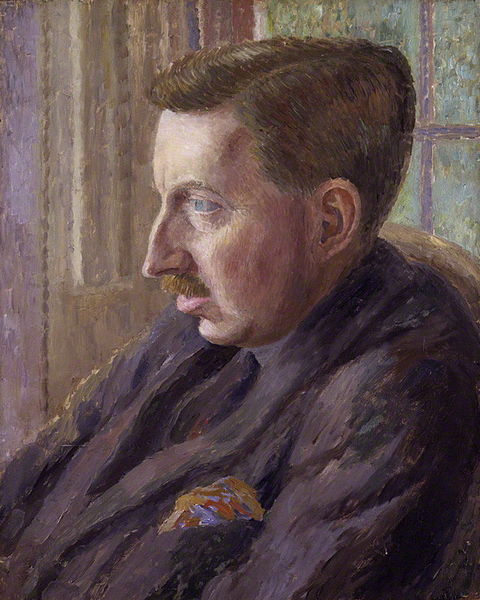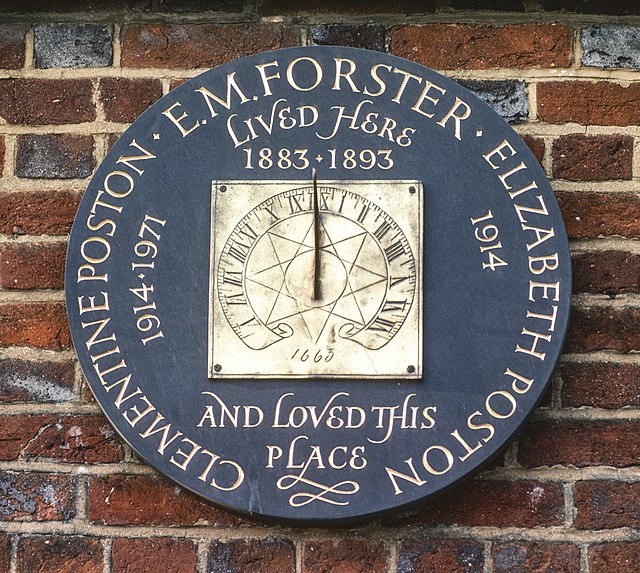A Passage to India is a 1924 novel by English author E. M. Forster set against the backdrop of the British Raj and the Indian independence movement in the 1920s. It was selected as one of the 100 great works of 20th century English literature by the Modern Library and won the 1924 James Tait Black Memorial Prize for fiction. Time magazine included the novel in its "All Time 100 Novels" list. The novel is based on Forster's experiences in India, deriving the title from Walt Whitman's 1870 poem "Passage to India" in Leaves of Grass.
First edition (UK)
View of the Rajgir Hills, an inspiration for the fictional Marabar Hills.
Plan of the Barabar Caves
Entrance to the Barabar Caves
Edward Morgan Forster was an English author, best known for his novels, particularly A Room with a View (1908), Howards End (1910) and A Passage to India (1924).
Portrait of Forster by Dora Carrington, c. 1924–1925
Plaque and sundial designed by Bob Duvivier at Rooks Nest, the childhood home remembered in Forster's novel Howards End.
A section of the main building, Tonbridge School
Forster lived and died at this house, the home of his friends Robert and May Buckingham. The sign above the garage door marks the 100th anniversary of his birth.








